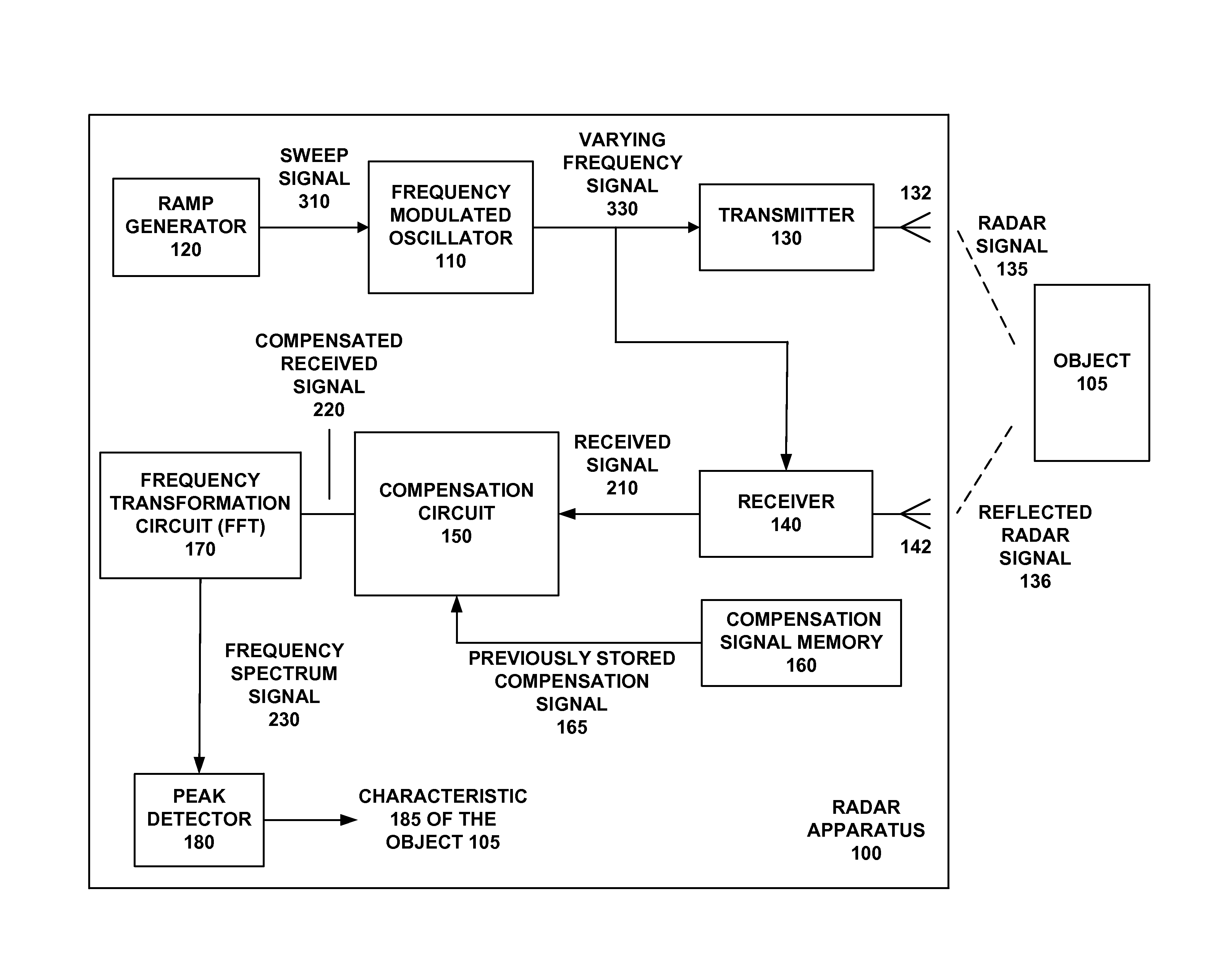Calibrated radar apparatus and associated methods
a radar and apparatus technology, applied in the field of radar systems, can solve the problems of limiting the range of frequencies allowed, limiting the frequency at which a beat note can be effectively generated,
- Summary
- Abstract
- Description
- Claims
- Application Information
AI Technical Summary
Benefits of technology
Problems solved by technology
Method used
Image
Examples
Embodiment Construction
[0035]For near field targets, because the beat note frequency is low enough to be masked by other factors, distance measurement techniques for traditional radar sensing systems using Frequency Modulated Continuous Wave (FMCW) are inaccurate.
[0036]One of the main factors confounding the detection of near-field objects is the frequency modulation of the carrier signal. This modulation introduces its own signal at a frequency similar to that of the beat note, making it difficult to distinguish the actual beat note with the traditional Fast Fourier Transform (FFT) algorithm. Another confounding factor is leakage and other artifacts generated by the radar unit itself.
[0037]The accuracy of distance measurements are traditionally improved by sweeping a wide bandwidth of the operating frequency of the radar sensing system, e.g. 600 MHz to 1 GHz bandwidth. This method can be utilized by enclosed environments but cannot be used for open air systems due to the above mentioned regulatory restri...
PUM
 Login to View More
Login to View More Abstract
Description
Claims
Application Information
 Login to View More
Login to View More - R&D
- Intellectual Property
- Life Sciences
- Materials
- Tech Scout
- Unparalleled Data Quality
- Higher Quality Content
- 60% Fewer Hallucinations
Browse by: Latest US Patents, China's latest patents, Technical Efficacy Thesaurus, Application Domain, Technology Topic, Popular Technical Reports.
© 2025 PatSnap. All rights reserved.Legal|Privacy policy|Modern Slavery Act Transparency Statement|Sitemap|About US| Contact US: help@patsnap.com



